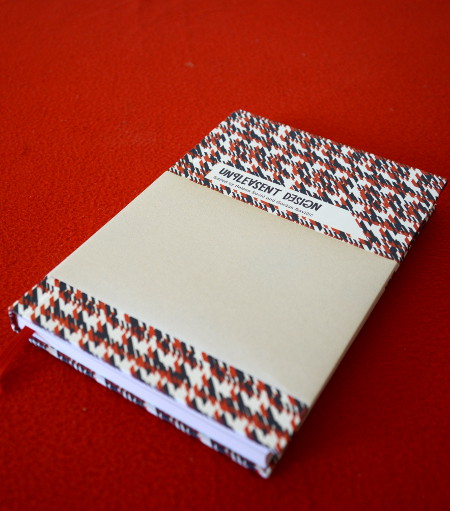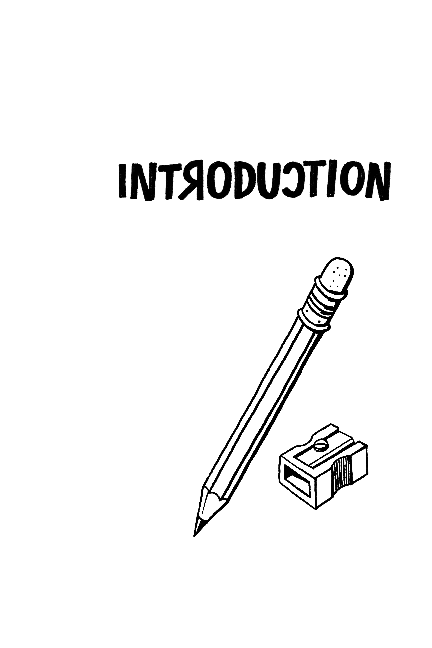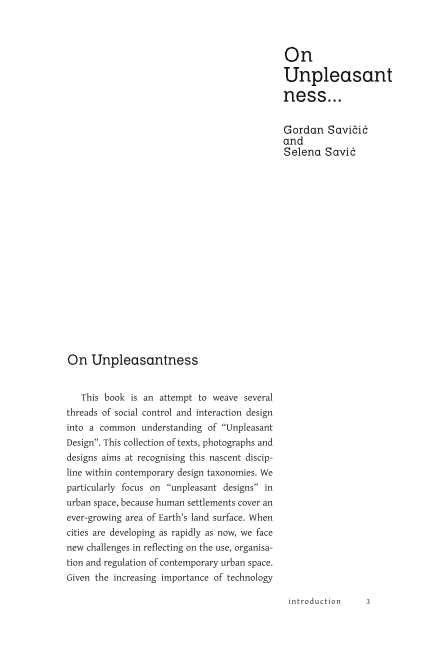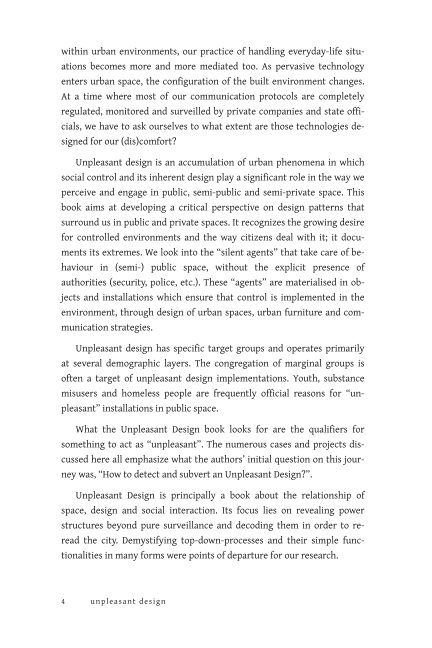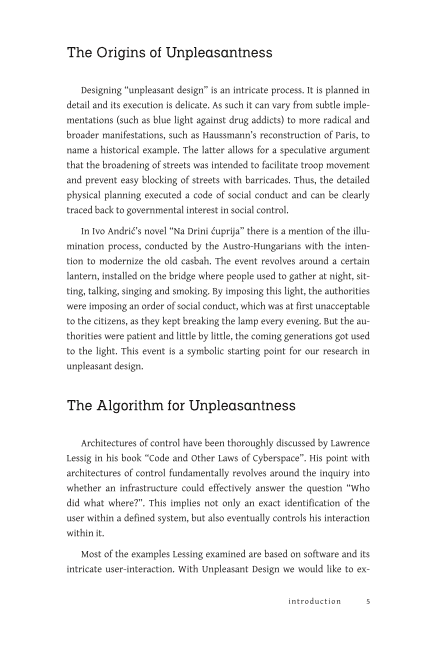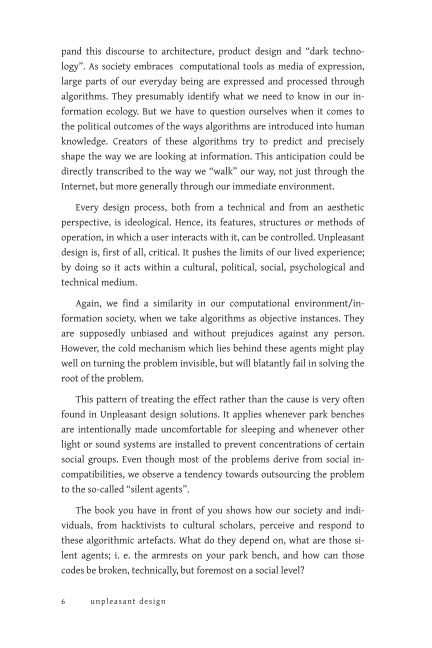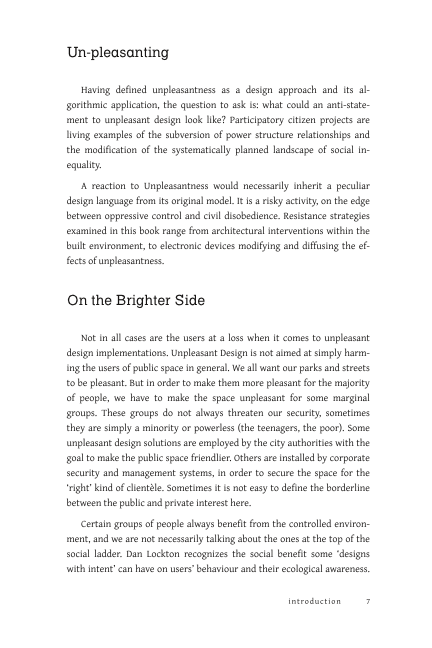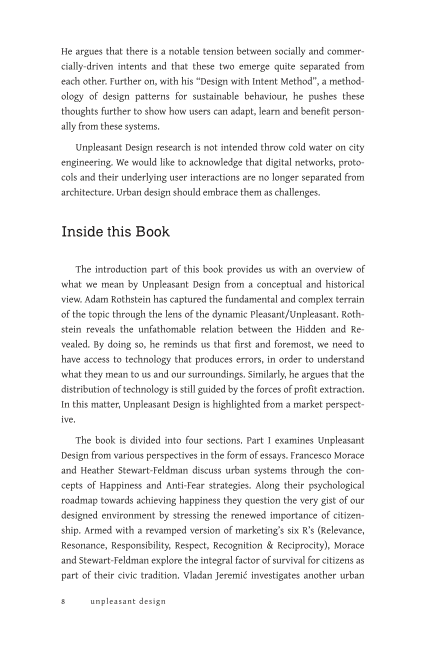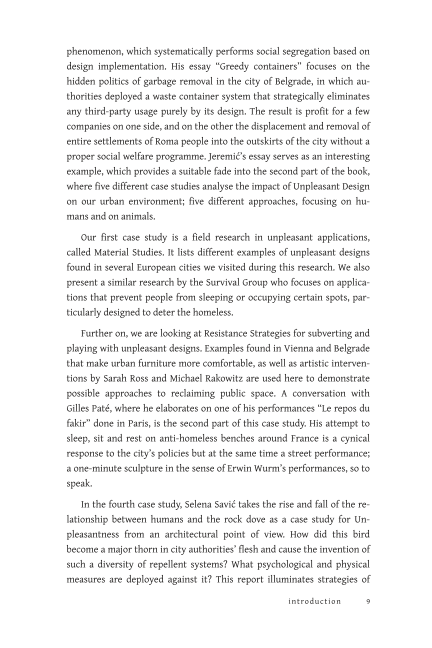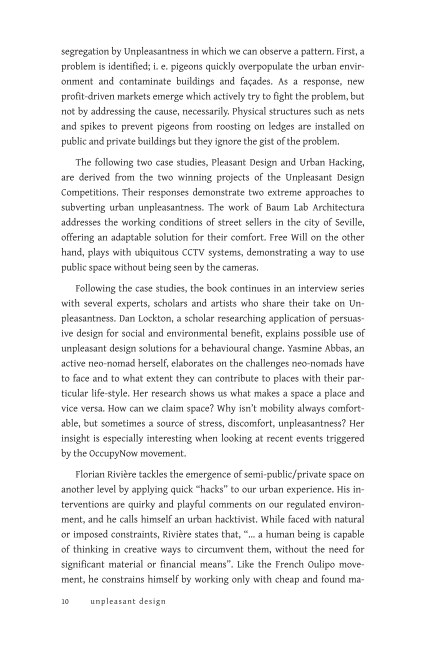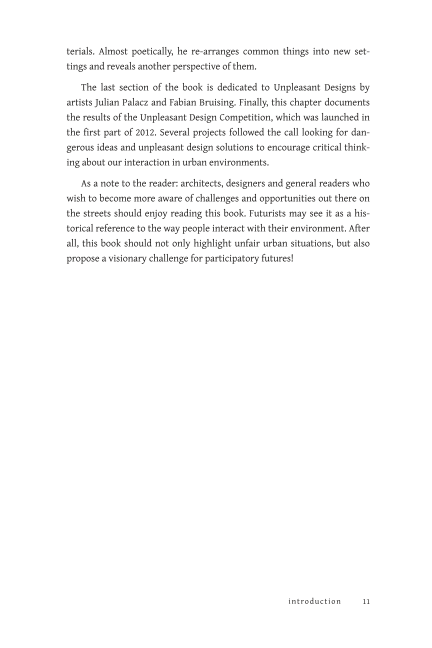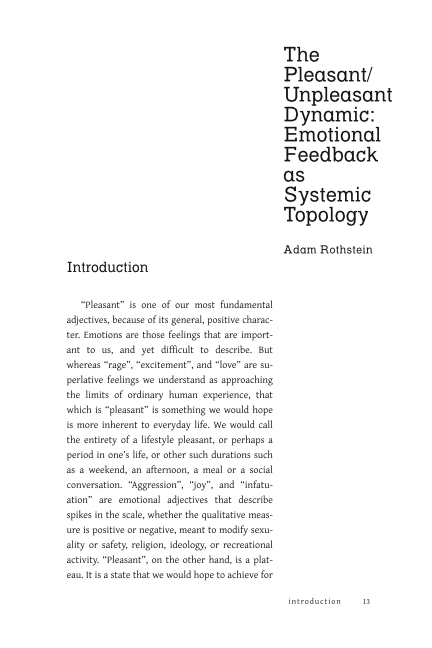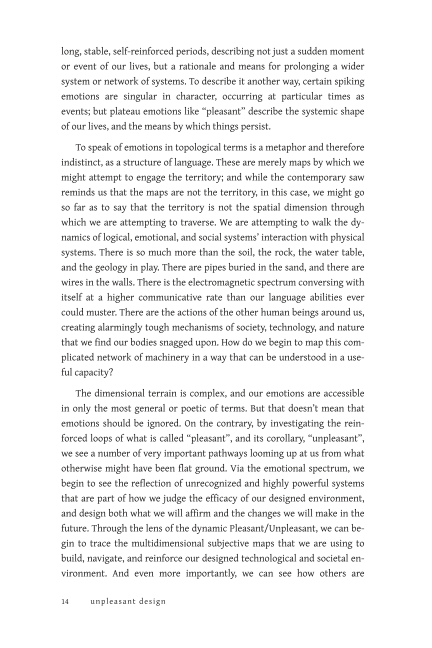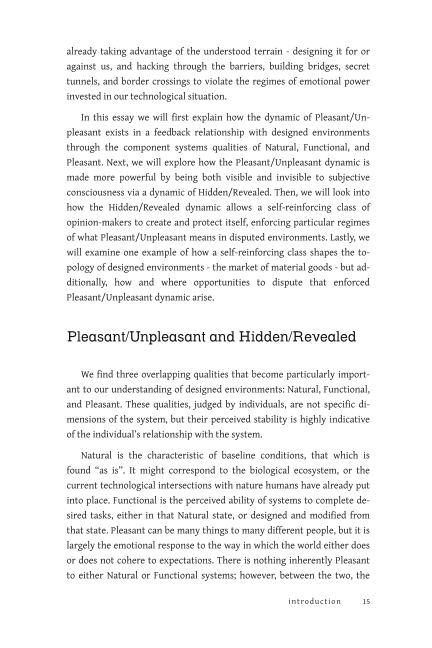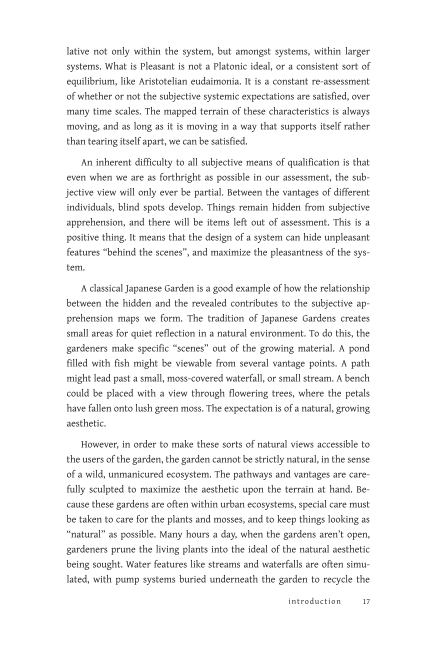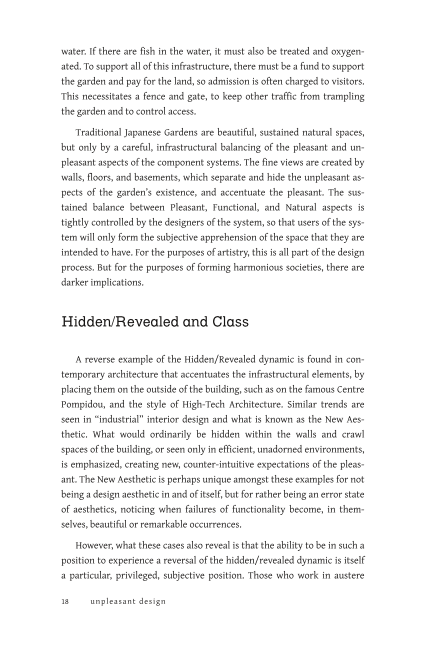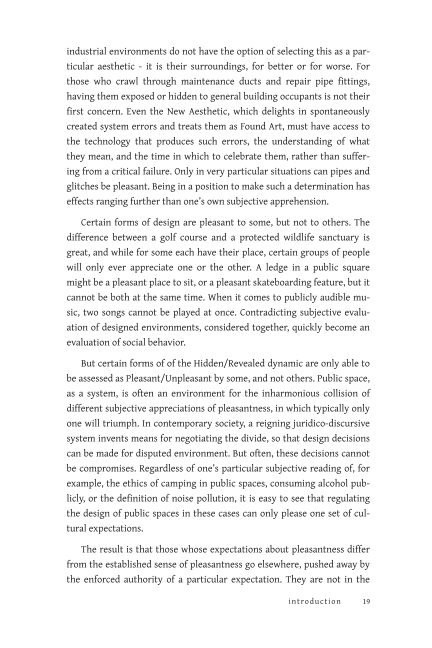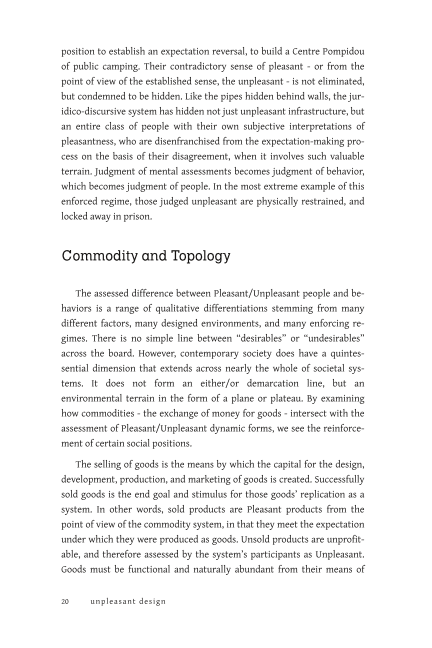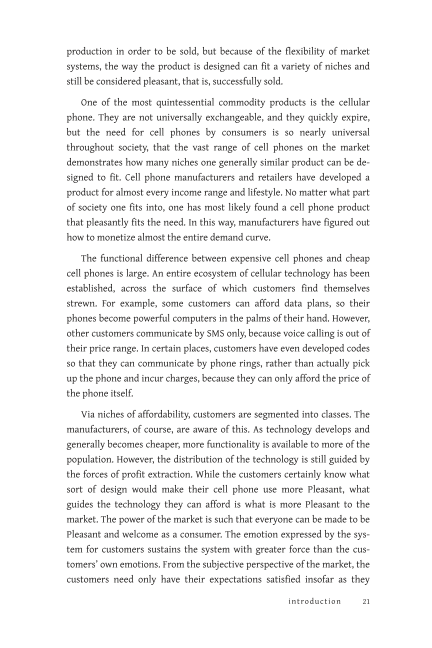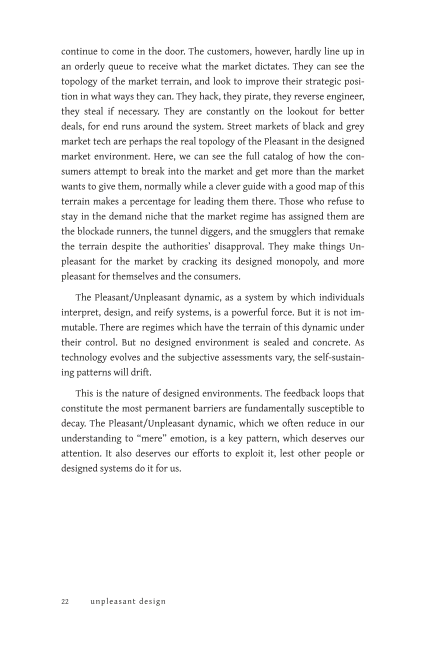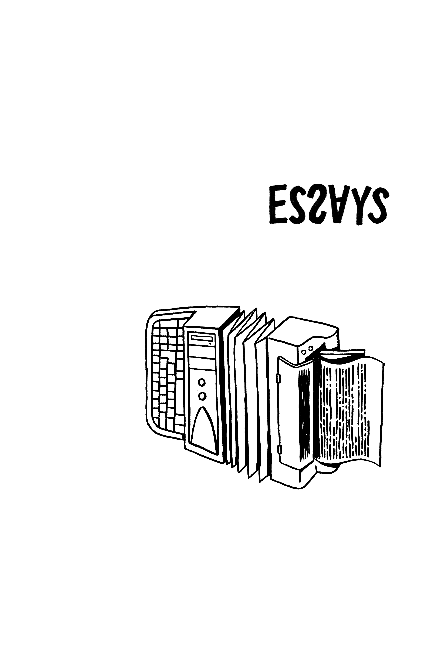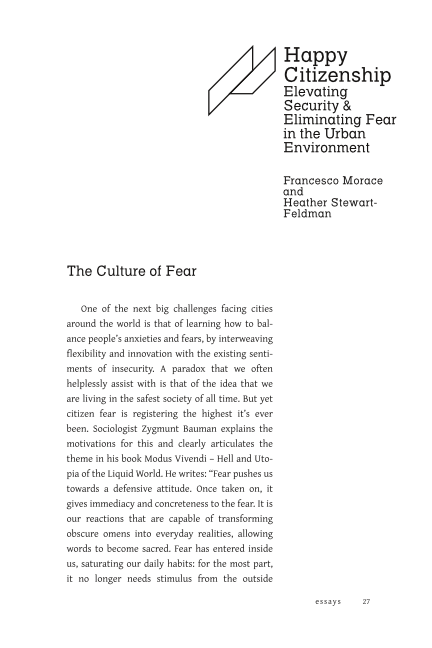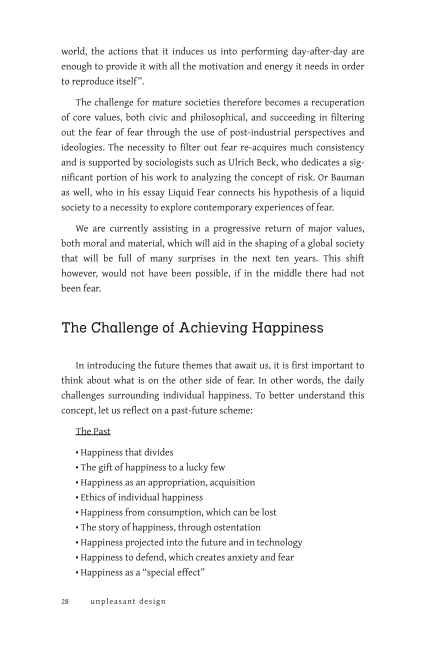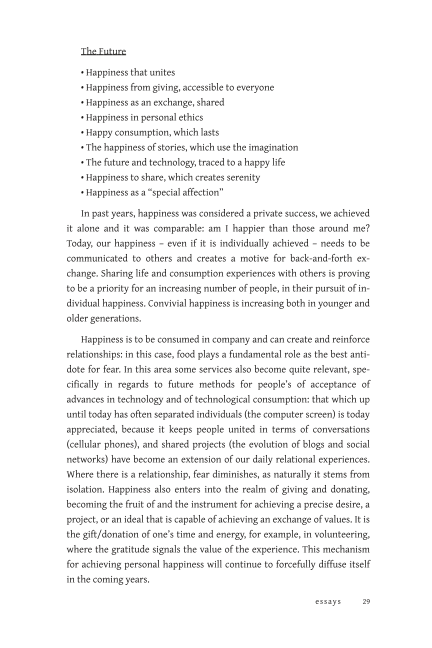Unpleasant Design Competition Entries
Following the open call for submissions in June this year, we are happy to share the a selection of competition entries we received. See the winning projects here
SI8DO_ They did let me do(wn), I prize
Social integration furniture Seville (Spain)
BAUM LAB Architecture: Marta Barrera, Javier Caro and Miguel Gentil.Collaborators: Viktoria Tschurtschenthaler, Alexander Juretzka and Eva
Spielberger
SI8DO is a social-integration urban furniture, a subversive urban-intervention tool designed to improve the working conditions of those people that work at the traffic lights selling tissues.
After months of fieldwork, more than a hundred immigrants were located at Seville’s crossroads. Unfortunately most of them spend the whole day standing.
Attached as a parasite to traffic lights, a simple, folded, perforated metal sheet creates both the seat and the storage shelf they need to work more comfortable. SI8DO not only highlights an unfair urban situation, but also proposes a solution.
The first prototype is now fabricated and tested. Here we present the results.
Some tissues companies are interested in supporting the idea.
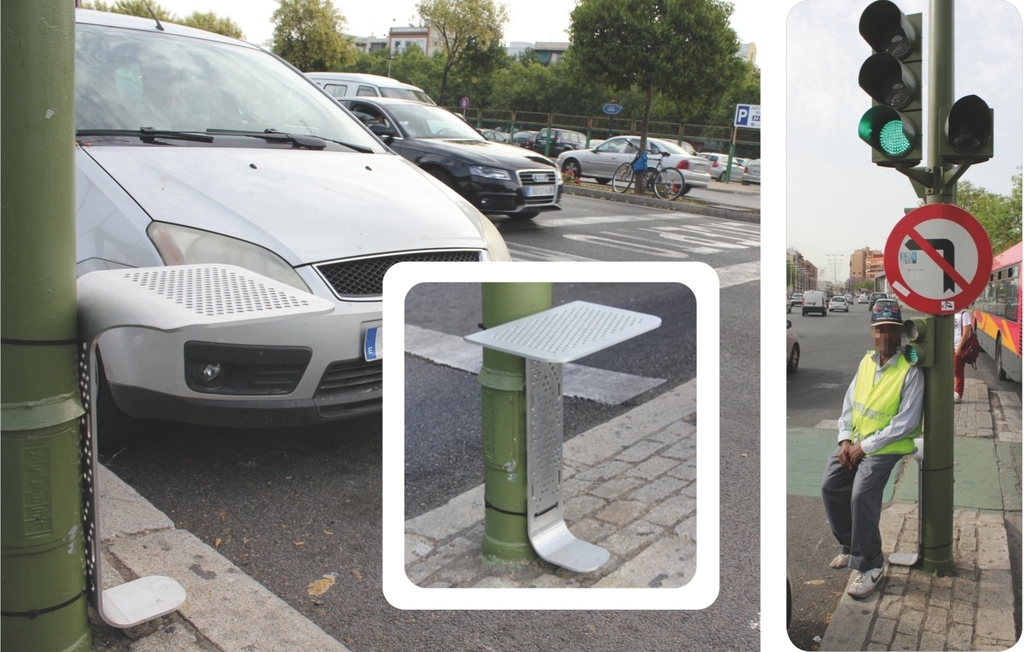
FREE WILL, I prize
Marko TirnanicWith this work I wanted to provoke thoughts on the idea of free will and possible “free spaces”, freed from control of the state and proscribed moral norms.
This work was produced on a location under video surveillance – CCTV – and it has two interrelated components. One is a security camera recording and the second is a photo that reveals another angle -within the scope of CCTV but hidden from the surveillance camera. Within this uncovered, uncontrolled and free space we shot with fifteen people trying to fill the space invisible to the camera, thus breaching the ethical norm and intention of controlling space with a camera lens. By highlighting uncontrolled public space, in the form of triangle, I wanted to emphasize trust and fear, conditionality and spontaneity, as well as other contradictions produced by two different lenses from the video and photo cameras.The two can be also seen as different perspectives that the observer could take and it could make the observer reach two different conclusions – either that the space is free of people or that people use the space. Moreover, there is a need for space that is utilised as a Social vent, contrary to the Orvel-Haksley dystopian scenario.
By opening the question of fear of judgement, one can modify the needs of citizens and force them to use only “free space”
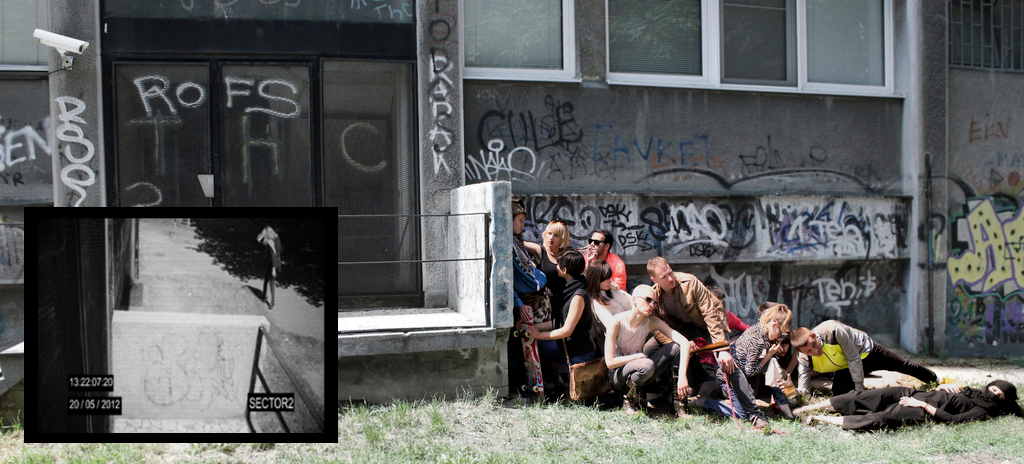
After the publication of our book, it came to our attention that the third prize “Maze door lock” was misrepresented as original work from Lebedev’s Defendius April’s joke, dated back from April 01 2008. Hence, we decided to remove its content.
PUBLIC PRIVACY
Nevena Boskovic and Jelena BoskovicBelgrade has several public parks that are open 24 hours. While in other European cities parks are closed during night, because of the safety measures, in smaller cities, such as Belgrade, that is still not an issue.
However, as Belgrade has changed over time, parks outlook have been changed also. It has been achieved by expansion of the urban landscape, by removing redundant trees and bushes. While before, parks were escape from the city, because they were allowing “invisibility”, parks today are just trespassing places.
Because of the lack of privacy and short working time of public toilets, citizens are discouraged to spend longer time in the parks. Citizens are directed to the other areas, and of course to the objects of economical transactions – clubs, cinemas and more & more shopping malls. This is what goes in favor of the state, to protect the consumer society and to increase control of its citizens. What happens with our right for the privacy and individuality?
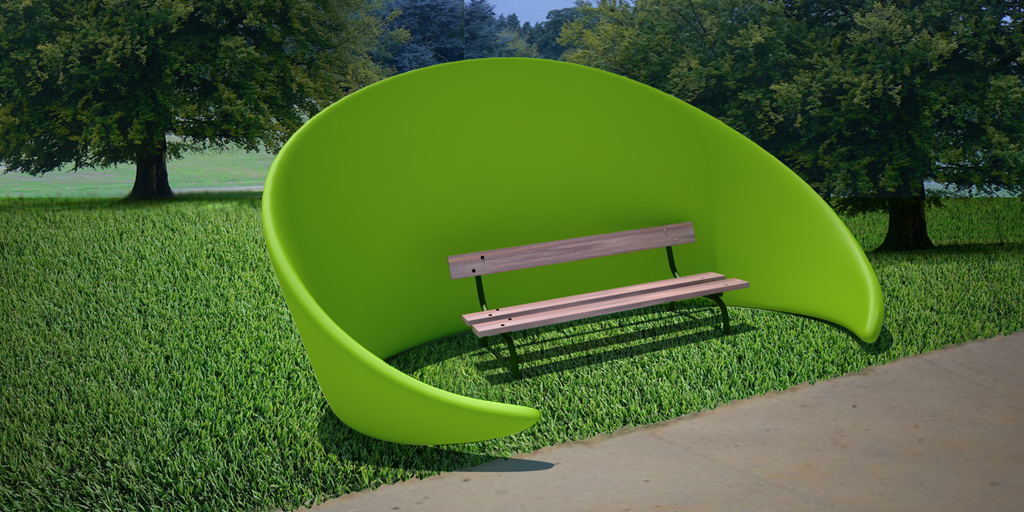
GROTESQUES AND TISSUES AS UNPLEASANT GRAPHIC DESIGNS
Maarten van der HeijdenThe Grotesques and Tissues are graphic designs that can function for the (unpleasant and provocative, see below) inside and/or outside embellishment and (unpleasant and provocative) inside and/or outside ornamentation, of public, semi-public and private buildings, especially for institutions of International Law and Justice, Human Rights Institutions, museums and more. I think for instance of the International Court of Justice in The Hague.
In the Grotesques and the Tissues I use the photographs the allied forces took at the liberation of the nazi concentration camps in 1945 as source images. I am working on versions with photos of other genocides as source images. Some of the Grotesques I framed ad libitum with Ottoman Calligraphies and Tugra’s.
The Grotesques and Tissues are computer generated and computer coloured photo collages in the form of (1) C-prints on aluminium and perspex, (2) lightboxes, and (3) wall-tapestries. The ‘Grotesques’ and ‘Tissues’ form the starting point for collaboration with architects and clients aimed at the realization of monumental large scale applications and combinations of them, integrated in public and semi-public structures. Three dimensional (building block) versions are possible; thin versions with led-illumination are possible, as well as very big sizes.
Because of the contradictions between on the one hand the subject/content (i.e. real photographs of the horror of the holocaust), and on the other hand the kaleidoscopic symmetrical decorative and beautifully coloured patterns, the Grotesques and Tissues have a unpleasant effect and a provocative critical function: they move emotionally, lead to thinking and provoke questions and discussions. They go against the manipulation in the public sphere and undermine the idea of ‘That which appears is good, and that which is good appears’. The effect is increased by the addition of arabic texts.
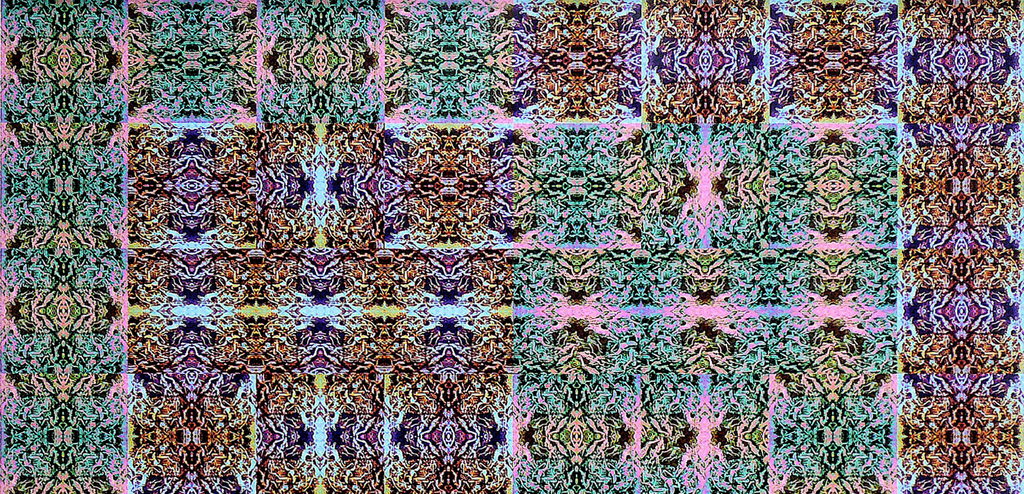
————————————————————————————————————————–
